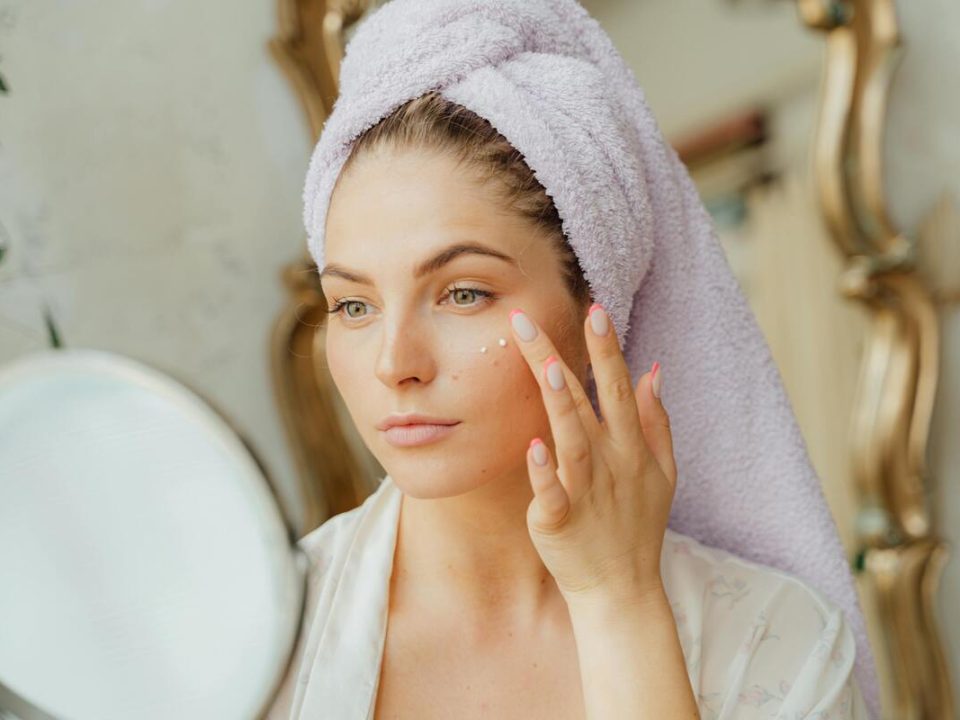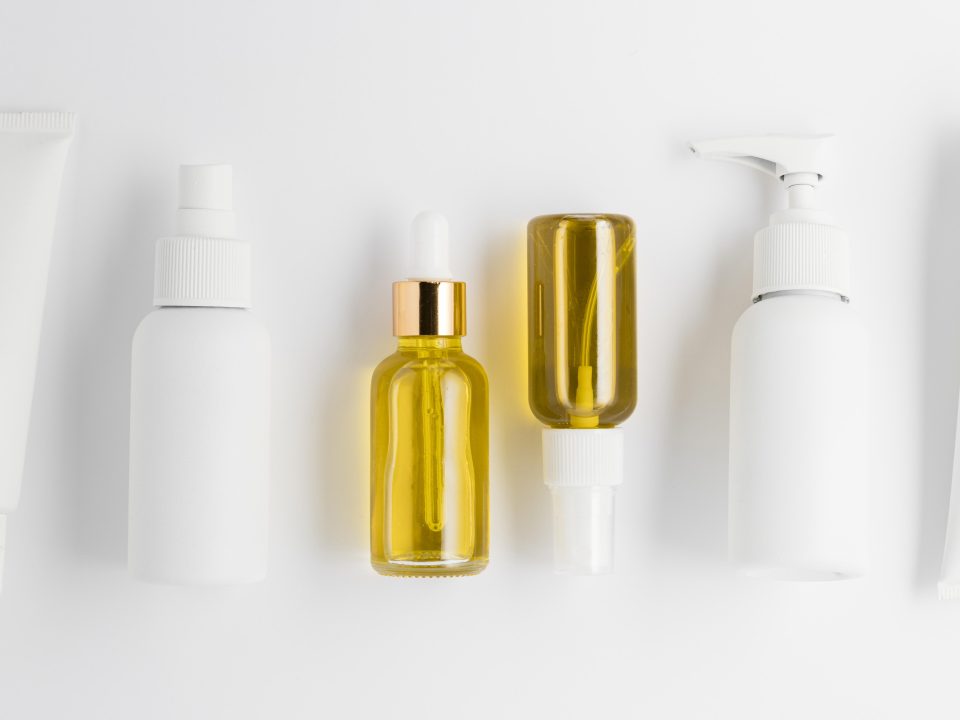What Is The Effect of Glycolic Acid Peeling?
January 26, 2024
Is Salicylic Acid Ok To Use Daily?
January 26, 2024What Does A Glycolic Acid Peel Do?
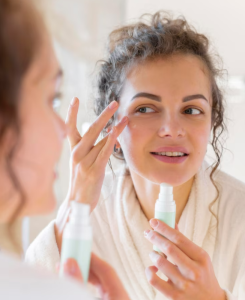
Glycolic Acid’s Acne-Fighting Arsenal: Unclogging Pores and Quelling Inflammation
Acne can be a persistent foe, leaving behind blemishes and frustration. But, glycolic acid offers a powerful weapon in your fight for clear skin. Let’s delve into the mechanisms by which it tackles acne and understand the benefits it can bring, particularly for oily and acne-prone complexions.
Mechanisms of Acne Warfare
Glycolic acid’s acne-fighting strategy revolves around two key mechanisms:
- Unclogging Pores: Acne starts with clogged pores. Dead skin cells, excess oil, and bacteria can accumulate within these tiny openings, creating the perfect breeding ground for breakouts. Glycolic acid, with its exfoliating prowess, comes to the rescue. It gently loosens and dissolves the sticky glue holding dead skin cells together, allowing them to shed more easily and preventing them from clogging pores. This results in clearer, less congested skin.
- Reducing Inflammation: Inflammation plays a significant role in acne development. When pores become clogged and infected, the surrounding skin becomes inflamed, leading to redness, swelling, and pustules. Glycolic acid possesses anti-inflammatory properties. It helps to calm down the irritated skin, reducing redness, swelling, and the formation of new blemishes. Additionally, it can inhibit the growth of acne-causing bacteria, further preventing future breakouts.
Benefits for Clear Skin
These mechanisms translate into tangible benefits for those struggling with acne, especially those with oily or acne-prone skin:
- Reduced Breakouts: With pores unclogged and inflammation minimized, the frequency and severity of breakouts decrease significantly.
- Diminished Blemish Size and Redness: Existing blemishes become smaller and less red due to the reduced inflammation and exfoliation of dead skin cells.
- Improved Skin Texture: The removal of dead skin cells and excess oil leads to a smoother, more even-toned skin texture.
- Reduced Oiliness: Glycolic acid can help regulate sebum production, especially in oily skin, further preventing pore clogging and breakouts.
- Enhanced Overall Appearance: With fewer breakouts, less redness, and a smoother texture, the overall appearance of the skin becomes clearer and more radiant.
Important Considerations
While glycolic acid can be a valuable tool for acne management, it’s crucial to remember:
- Start Gentle: If you have sensitive skin or are new to glycolic acid, start with a low concentration and gradually increase as your skin tolerates it.
- Moisturize Adequately: Exfoliation can sometimes lead to dryness, so using a gentle moisturizer is crucial to maintain a healthy skin barrier.
- Sun Protection is Essential: Exfoliated skin is more sensitive to sun damage. Use sunscreen religiously to prevent hyperpigmentation and worsening of acne.
- Professional Guidance: For severe acne or sensitive skin, consulting a dermatologist is recommended to determine the best treatment plan and avoid potential irritation.
Unlocking Clear Skin’s Potential
By understanding how glycolic acid works to unclog pores, reduce inflammation, and combat acne, you can harness its power to achieve clearer, healthier skin. Remember, patience, consistency, and proper skincare practices are key to unlocking the full potential of this acne-fighting warrior.

Unveiling a Radiant Complexion: How Glycolic Acid Tackles Pigmentation
Glycolic acid isn’t just a powerhouse for exfoliation; it can also work wonders on uneven skin tone and stubborn pigmentation. Let’s dive into how this magic molecule achieves its radiance-boosting feats:
Mechanism of Pigment Fading
Sun damage, inflammation, and hormonal changes can trigger an overproduction of melanin, the pigment responsible for skin color. This results in hyperpigmentation, manifesting as sunspots, age spots, or melasma. Glycolic acid steps in to address this excess melanin in two key ways:
- Melanin Inhibition: Glycolic acid directly interferes with the production of melanin by tyrosinase, an enzyme involved in melanin synthesis. This reduces the amount of melanin produced, gradually lessening the appearance of existing pigmentation.
- Enhanced Cell Turnover: As described earlier, glycolic acid facilitates the shedding of dead skin cells. This accelerated turnover brings forth newer, less pigmented cells, further diminishing the visibility of hyperpigmentation.
Benefits for a Radiant You
By tackling excess melanin and promoting faster cell turnover, glycolic acid delivers a range of benefits for a more even and radiant complexion:
- Fading Sunspots and Age Spots: Those pesky sun-induced dark spots begin to lighten and fade, revealing a more uniform skin tone.
- Reduced Melasma Appearance: Melasma, a common form of hyperpigmentation often triggered by hormonal changes, becomes less noticeable with consistent glycolic acid use.
- Brighter, More Even Skin Tone: Overall, the skin appears brighter and more even-toned, thanks to the reduction of dark patches and enhanced overall cell health.
- Boosted Luminosity: With fewerpigmented cells to obstruct light reflection, the skin takes on a radiant glow, reflecting a healthy, youthful appearance.
Important Caveats
While glycolic acid can be a powerful tool for improving skin tone, it’s crucial to remember:
- Gradual and Consistent Approach: Pigment fading takes time and consistency. Patience and regular use are key to seeing noticeable results.
- Professional Advice Always Recommended: Consult a dermatologist or esthetician to determine the appropriate peel concentration and treatment plan for your specific skin concerns and sensitivities.
- Sun Protection is Paramount: Exfoliation makes the skin more sensitive to sun damage. Sun protection is absolutely essential to prevent further pigmentation and maintain the achieved results.
A Brighter Future for Your Skin
By understanding how glycolic acid works to combat hyperpigmentation and promote a radiant complexion, you can unlock its potential for a more even, luminous, and youthful-looking skin. Remember, a healthy dose of sun protection and professional guidance are your allies in this journey to a brighter you.

Collagen Boost with Glycolic Acid: Unveiling the Anti-Aging Powerhouse
Glycolic acid’s benefits go beyond just exfoliating and tackling blemishes. It delves deeper, targeting the very foundation of youthful skin – collagen. Let’s unveil the fascinating mechanism behind its collagen-boosting magic and explore the rejuvenating benefits it offers for a firmer, smoother complexion.
Mechanism of Collagen Production
Collagen, the most abundant protein in the skin, provides the scaffolding for its structure, ensuring firmness and elasticity. Unfortunately, collagen production naturally declines with age, leading to the appearance of wrinkles and fine lines. Glycolic acid steps in to combat this decline in two ways:
- Fibroblast Activation: Fibroblasts are the cells responsible for collagen production. Glycolic acid directly stimulates these cells, prompting them to produce more collagen fibers. Imagine it as a wake-up call for the collagen-making factories in your skin.
- Enhanced Cellular Turnover: As mentioned earlier, glycolic acid accelerates the shedding of dead skin cells. This process exposes the underlying dermis, where collagen resides. With the top layer out of the way, fibroblasts have better access to the extracellular matrix, the space where collagen fibers are formed, facilitating their production and integration.
Benefits of Collagen Boost
The increased collagen production orchestrated by glycolic acid translates into a range of anti-aging benefits:
- Reduced Wrinkle Appearance: As collagen levels increase, the skin regains its plumpness and elasticity, filling in and softening the appearance of existing wrinkles and fine lines. Think of it as plumping up the skin from within, minimizing surface wrinkles.
- Improved Skin Firmness: The increased collagen network provides better structural support, resulting in firmer, tighter skin. Imagine it as strengthening the foundation of your skin, making it less prone to sagging and wrinkles.
- Enhanced Elasticity: The newly formed collagen fibers provide greater elasticity, allowing the skin to bounce back and resist the formation of new wrinkles. Think of it as giving your skin a springier quality.
- Overall Youthful Appearance: By addressing these key signs of aging, glycolic acid contributes to a more youthful and radiant complexion.
Important Considerations
While glycolic acid’s collagen-boosting potential is promising, it’s crucial to remember:
- Gradual and Consistent Approach: Collagen production takes time, and results are not overnight. Consistent use of glycolic acid peels or products over a period of time is key to seeing noticeable improvement.
- Concentration Matters: Higher concentrations of glycolic acid may lead to more dramatic collagen stimulation but also come with increased risk of irritation. Choose the appropriate concentration based on your skin type and sensitivity.
- Sun Protection is Vital: Increased collagen production makes the skin more susceptible to sun damage. Using sunscreen daily is essential to protect your new collagen and prevent premature aging.
- Holistic Approach: Combine glycolic acid with other anti-aging strategies like a balanced diet, adequate sleep, and proper hydration for optimal results.
A Future of Youthful Skin
By understanding how glycolic acid stimulates collagen production and the benefits it offers for a firmer, smoother complexion, you can unlock its potential as a powerful anti-aging ally. Remember, patience, consistency, and a holistic approach are key to achieving and maintaining a youthful glow.
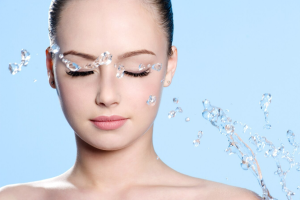
Glycollic Acid: Your Skin’s Hydration Hero Unlocking a Dewy Glow
Beyond its exfoliating and anti-aging prowess, glycolic acid holds a secret weapon for achieving that coveted dewy glow: enhanced hydration. Let’s delve into the mechanisms behind this watery magic and unveil the benefits it offers for plump, hydrated skin.
Mechanism of Hydration Magic
Glycolic acid’s hydrating powers operate on two fronts:
- Humectant Action: Like a tiny sponge, glycolic acid attracts and absorbs moisture from the deeper layers of the skin and even the air, drawing it towards the surface. This effectively boosts the skin’s water content, leaving it feeling instantly plumper and more hydrated.
- Exfoliation-Hydration Synergy: By removing dead skin cells, glycolic acid clears the path for moisture to penetrate deeper into the skin. This enhanced penetration improves the overall effectiveness of moisturizers and serums, maximizing their hydrating potential.
Benefits of a Hydrated Haven
This powerful blend of moisture attraction and deep penetration translates into a range of visible benefits:
- Reduced Dryness and Flaking: With increased water content, the skin becomes less prone to dryness and flaking, revealing a smoother, more polished appearance.
- Enhanced Plumpness and Elasticity: Hydration plumps up the skin from within, reducing the appearance of fine lines and wrinkles. Improved elasticity gives the skin a youthful bounce and resistance to future wrinkles.
- Increased Radiance: Well-hydrated skin reflects light better, resulting in a radiant, healthy glow. Imagine it as turning on the internal lamp in your skin, radiating outward.
- Improved Product Absorption: Exfoliation clears the way for deeper penetration of other skincare products, enhancing their effectiveness. Your favorite moisturizer becomes even more powerful when paired with glycolic acid.
Important Considerations
While glycolic acid can be a potent hydrator, remember:
- Moisturization is Key: Exfoliation can sometimes lead to temporary dryness, so consistent use of a good moisturizer is crucial to maintain the balance.
- Concentration Matters: Higher concentrations may be more exfoliating but potentially harsher. Choose a concentration appropriate for your skin type and sensitivity.
- Sun Protection is Essential: Hydrated skin can be more susceptible to sun damage. Apply sunscreen daily to prevent premature aging and protect your newfound dewiness.
- Holistic Approach: Combine glycolic acid with other hydrating habits like drinking plenty of water and using a humidifier for optimal results.
Unlocking the Dewy Secret
By understanding how glycolic acid attracts and retains moisture, you can unlock its hydrating potential for a plump, radiant complexion. Remember, a balanced approach – with proper moisturization, sun protection, and healthy habits – is key to maintaining that coveted dewy glow and letting your skin’s inner light shine through.
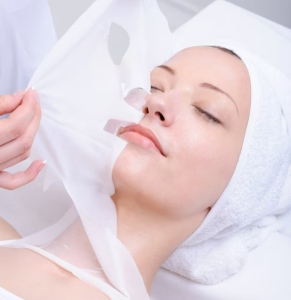
Deep Dive into Exfoliation and Skin Smoothing with Glycolic Acid Peels
Mechanism of Exfoliation
Glycolic acid is a small, water-soluble molecule with a unique ability to penetrate the top layer of the skin, the stratum corneum. This layer is composed of dead skin cells (corneocytes) held together by a protein-lipid complex called the corneodesmosome. Glycolic acid works its magic by disrupting these corneodesmosomes, weakening the bonds between dead skin cells and making them easier to shed. Think of it like dissolving glue between bricks – the bricks (dead cells) remain, but they’re no longer stuck together and can be gently swept away.
Types of Exfoliation
There are two main types of exfoliation with glycolic acid peels:
- Chemical exfoliation: This is the primary action of glycolic acid. It dissolves the corneodesmosomes, effectively dissolving the “glue” holding dead cells together.
- Enzymatic exfoliation: Glycolic acid can also indirectly stimulate the skin’s own natural exfoliating enzymes. These enzymes help break down the proteins and lipids in the corneodesmosomes, further aiding in the shedding of dead cells.
Benefits of Exfoliation
The removal of dead skin cells brings a multitude of benefits:
- Smoother Texture: With the dead cell layer gone, the underlying skin appears smoother and more even-toned. Rough patches and flaky skin are significantly reduced.
- Reduced Appearance of Fine Lines and Wrinkles: Dead skin cells can accumulate and clog up the skin, making fine lines and wrinkles appear more pronounced. Exfoliation removes these cells, revealing the plumper, smoother skin beneath, leading to a visibly reduced appearance of fine lines and wrinkles.
- Enhanced Skin Brightness: Dead skin cells can dull the skin’s natural radiance. Exfoliation removes this dull layer, revealing the brighter, more radiant skin beneath.
- Improved Product Penetration: Exfoliation removes a barrier that can prevent skincare products from penetrating the skin effectively. This allows serums, moisturizers, and other treatments to reach deeper layers of the skin, maximizing their effectiveness.
- Boosted Collagen Production: Studies suggest that glycolic acid peels can stimulate the production of collagen, a protein that gives skin its firmness and elasticity. Over time, this can lead to a firmer, more youthful appearance.
Additional Factors
- Peel Concentration: The concentration of glycolic acid in the peel determines the depth of exfoliation. Superficial peels (20-30%) are gentle and suitable for most skin types, while deeper peels (50-70%) offer more dramatic results but may require professional application and come with increased risk of irritation.
- Skin Type and Sensitivity: Sensitive skin may be more prone to irritation from glycolic acid peels. Consult a dermatologist or esthetician to determine the appropriate peel concentration for your skin type and sensitivity.
- Sun Protection: Exfoliated skin is more sensitive to the sun. Be diligent about applying sunscreen daily, especially after a glycolic acid peel.
Glycolic acid peels offer a powerful way to achieve smoother, brighter, and more youthful-looking skin through effective exfoliation. Understanding the mechanism of action, different types of exfoliation, and the benefits of removing dead skin cells can help you choose the right peel for your skin and maximize its potential for radiant, healthy skin.

Beyond the Peel: Enhancing Your Glycolic Acid Experience
While glycolic acid peels offer a powerful punch for skin improvement, optimizing your experience goes beyond just choosing the right peel. Here are some additional sections to consider:
Boosting Your Peel’s Efficacy
- Pre-Peel Prep: A week before your peel, prep your skin with gentle exfoliation and hydrating products to create a smooth canvas for optimal penetration.
- Post-Peel Pampering: After your peel, follow a dedicated post-peel regimen prescribed by your professional. This may include soothing ointments, nourishing moisturizers, and gentle cleansers to promote healing and minimize side effects.
- Sun Protection Superhero: Apply sunscreen diligently and reapply frequently, especially after your peel. Consider investing in broad-spectrum SPF 30 or higher sunscreen for optimal protection.
- Hydration Hero: Drink plenty of water throughout the day and use a humidifier indoors to keep your skin hydrated and support the repair process.
- Dietary Diva: Eat a balanced diet rich in antioxidants and vitamins A, C, and E, which contribute to skin health and healing.
Beyond the Peel: Alternative Glycolic Acid Applications
- Serums and Creams: Glycolic acid is not limited to peels; it’s found in various serums, creams, and lotions for daily exfoliation and maintenance. These offer a gentler approach for maintaining smooth, radiant skin.
- Cleansers and Toners: Gentle cleansers and toners with low concentrations of glycolic acid can help remove dead skin cells and impurities, prepping your skin for other skincare products.
- Body Scrubs and Lotions: Glycolic acid body scrubs can help tackle rough patches and dryness on elbows, knees, and feet, while lotions keep your skin soft and smooth.
Living the Glycolic Acid Lifestyle
- Listen to Your Skin: Pay attention to how your skin reacts to glycolic acid and adjust your frequency and concentration accordingly. Don’t hesitate to consult your professional if you experience any concerns.
- Consistency is Key: Regular use of glycolic acid, whether through peels or home-care products, is essential for maintaining results and reaping its long-term benefits.
- Embrace a Holistic Approach: Combine glycolic acid with other healthy skincare habits like a balanced diet, adequate sleep, and stress management for optimal skin health and radiance.

Diving Deeper into Glycolic Acid Peels: Choosing the Right for You
While you’ve provided a great overview of different peel types and considerations, here’s an expanded look to help you decide on the best peel for your specific needs:
Superficial Peels: Your Gentle Gateway to Smoother Skin
- Concentration: 20-30% glycolic acid
- Suitable for: Most skin types, except sensitive or highly sun-damaged
- Benefits: Gentle exfoliation, improved texture, reduced dryness, minimized fine lines
- Downtime: Minimal to none, with slight redness or tingling for a short time
- Ideal for: Beginners, maintaining healthy skin, addressing mild issues like dullness or flakiness
Medium-Depth Peels: Tackling Deeper Concerns with Targeted Strength
- Concentration: 50-70% glycolic acid
- Suitable for: Oily, normal, or combination skin types, but be cautious with sensitive skin
- Benefits: Deeper exfoliation, reduced acne scars and hyperpigmentation, improved fine lines and wrinkles, firmer skin
- Downtime: 3-5 days of redness, peeling, and sensitivity
- Ideal for: Targeting moderate concerns like acne scarring, hyperpigmentation, and deeper wrinkles
Deep Peels: A Dermatologist’s Touch for Dramatic Transformations
- Concentration: 70-80% glycolic acid
- Suitable for: Only performed by dermatologists on suitable candidates with thick, resilient skin
- Benefits: Significant wrinkle reduction, improved acne scarring and sun damage, dramatic skin rejuvenation
- Downtime: Up to 2 weeks of significant redness, peeling, and potential scabbing
- Ideal for: Addressing severe concerns like deep wrinkles, significant scarring, or sun damage, requiring professional control and care
Choosing Your Perfect Peel
- Listen to Your Skin: Consult a dermatologist or esthetician for a professional assessment of your skin type, concerns, and suitability for peels.
- Start Gentle: Superficial peels are a safe entry point, allowing you to assess your skin’s tolerance and gradually graduate to deeper treatments if desired.
- Consider Your Goals: Prioritize your main concerns – fine lines, acne scars, hyperpigmentation? Match them to the strengths of each peel type.
- Sun Protection is Crucial: Before and after any peel, meticulous sun protection is mandatory to avoid aggravating side effects and compromising results.
Beyond Peel Strength
- Frequency Matters: Discuss a treatment plan with your professional, as the frequency of peels depends on your skin and chosen type.
- Home Care is Key: Post-peel care with prescribed or recommended products is crucial for optimal healing and maintaining results.
- Listen to Your Skin: Pay attention to any unusual reactions or sensitivities and follow your professional’s instructions for managing side effects.
Remember, glycolic acid peels offer a spectrum of possibilities for smoother, healthier skin. By understanding the different types, their strengths, and choosing the right one for your individual needs, you can unlock the transformative power of peels and achieve your desired radiant complexion.

